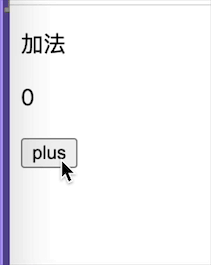在react-native开发中,使用Fetch进行网络请求。官方文档上的网络请求
基本使用方法
GET请求
fetch(@"http://www.baidu.com")
.then((response) => response.json()) .then((responseJson) => { console.log(responseJson);//打印返回的数据 }); }) .catch((error)=>{ console.log(error);//打印报的错 })
catch住fetch可能抛出的异常,否则出错时你可能看不到任何提示。
POST请求
Fetch还有可选的第二个参数,可以用来定制HTTP请求一些参数。你可以指定header参数,或是指定使用POST方法,又或是提交数据等等:
fetch('https://mywebsite.com/endpoint/',{ method: 'POST',headers: { 'Accept': 'application/json','Content-Type': 'application/json',},body: JSON.stringify({ firstParam: 'yourValue',secondParam: 'yourOtherValue',}) })
如果你的服务器无法识别上面POST的数据格式,那么可以尝试传统的form格式:
fetch('https://mywebsite.com/endpoint/',{
method: 'POST',headers: {
'Content-Type': 'application/x-www-form-urlencoded',body: 'key1=value1&key2=value2'
})
可以参考Fetch请求文档来查看所有可用的参数。
简单封装
GET
/* * get请求 * url:请求地址 * params:参数 * callback:回调函数 * */
static get(url,params,callback){
if (params) {
let paramsArray = [];
//拼接参数
Object.keys(params).forEach(key => paramsArray.push(key + '=' + params[key]))
if (url.search(/\?/) === -1) {
url += '?' + paramsArray.join('&')
} else {
url += '&' + paramsArray.join('&')
}
}
//fetch请求
fetch(url,{
method: 'GET',})
.then((response) => {
callback(response)
})
.catch((error) => {
alert(error)
});
}
POST
post有两种形式:
- 第一种:’Content-Type’: ‘application/json’
/*
* post请求
* url:请求地址
* params:参数,这里的参数格式是:{param1: 'value1',param2: 'value2'}
* callback:回调函数
* */
static postJSON(url,params,callback){
//fetch请求
fetch(url,{
method: 'POST',headers: {
'Accept': 'application/json',body:JSON.stringify(params)
})
.then((response) => response.json()) .then((responseJSON) => { callback(responseJSON) }) .catch((error) => { console.log("error = " + error) }); }
- 第二种: form表单形式
/*
* post请求
* url:请求地址
* params:参数,这里的参数要用这种格式:'key1=value1&key2=value2'
* callback:回调函数
* */
static postForm(url,headers: {
'Content-Type': 'application/x-www-form-urlencoded',body: params
})
.then((response) => response.json()) .then((responseJSON) => { callback(responseJSON) }) .catch((error) => { console.log("error = " + error) }); }
调用
//post请求
let params = {'key1':'value1','key2':'value2'};
NetRequest.postJSON('http://www.baidu.com/',function (set) {
//下面的就是请求来的数据
console.log(set)
})
//get请求,以百度为例,没有参数,没有header
NetRequest.get('https://www.baidu.com/','',function (set) {
//下面是请求下来的数据
console.log(set)
})
解释一下:
//将
JSON数据转换成字符串
JSON.stringify(params)//将数据JSON化 JSON.parse(responseJSON)




